
You can also graph the linear equations or inequalities on your graphing calculator to find solutions.
Let's say that you are asked to determine if (8, -2) is a solution to y = two-fifths 2 5 x + 4.
Step 1:
Enter the equation in 
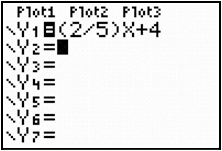
Step 2:
Look at the graph for this equation by pressing  (You may need to set your window.)
(You may need to set your window.)
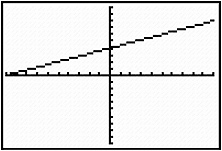
Step 3:
Use the  feature by pressing
feature by pressing  and then typing 8 and pressing
and then typing 8 and pressing 
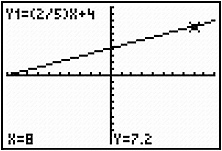
It's easy to see that when x = 8, y = 7.2 and so (8, -2) is NOT a solution to the equation since the point is not on the graph.
Let's look at a linear inequality next.
Is (-1, -6) a solution for y ≤ 3x − 2?
Step 1:
Enter the equation in 
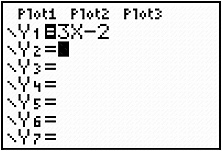
Step 2:
Look at the graph for this equation by pressing  (You may need to set your window.)
(You may need to set your window.)
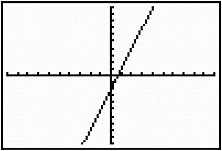
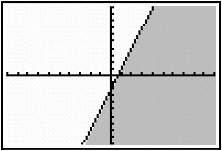
Remember that we are looking for points where y is less than or equal to. So we are looking for points that not only include the points on the line but are also below the line.
The solutions for y ≤ 3x − 2 are located on the line itself and the shaded portion of the graph.
Is (-1, -6) in this shaded region? YES, so it is a solution.
Use the Graph feature on your calculator and determine if the given ordered pair is a solution to each linear equation or inequality.
When you are finished, click below to check your answer.
Interactive popup. Assistance may be required.Answer to question 1: Yes
Answer to question 2: Yes
Answer to question 3: Yes
